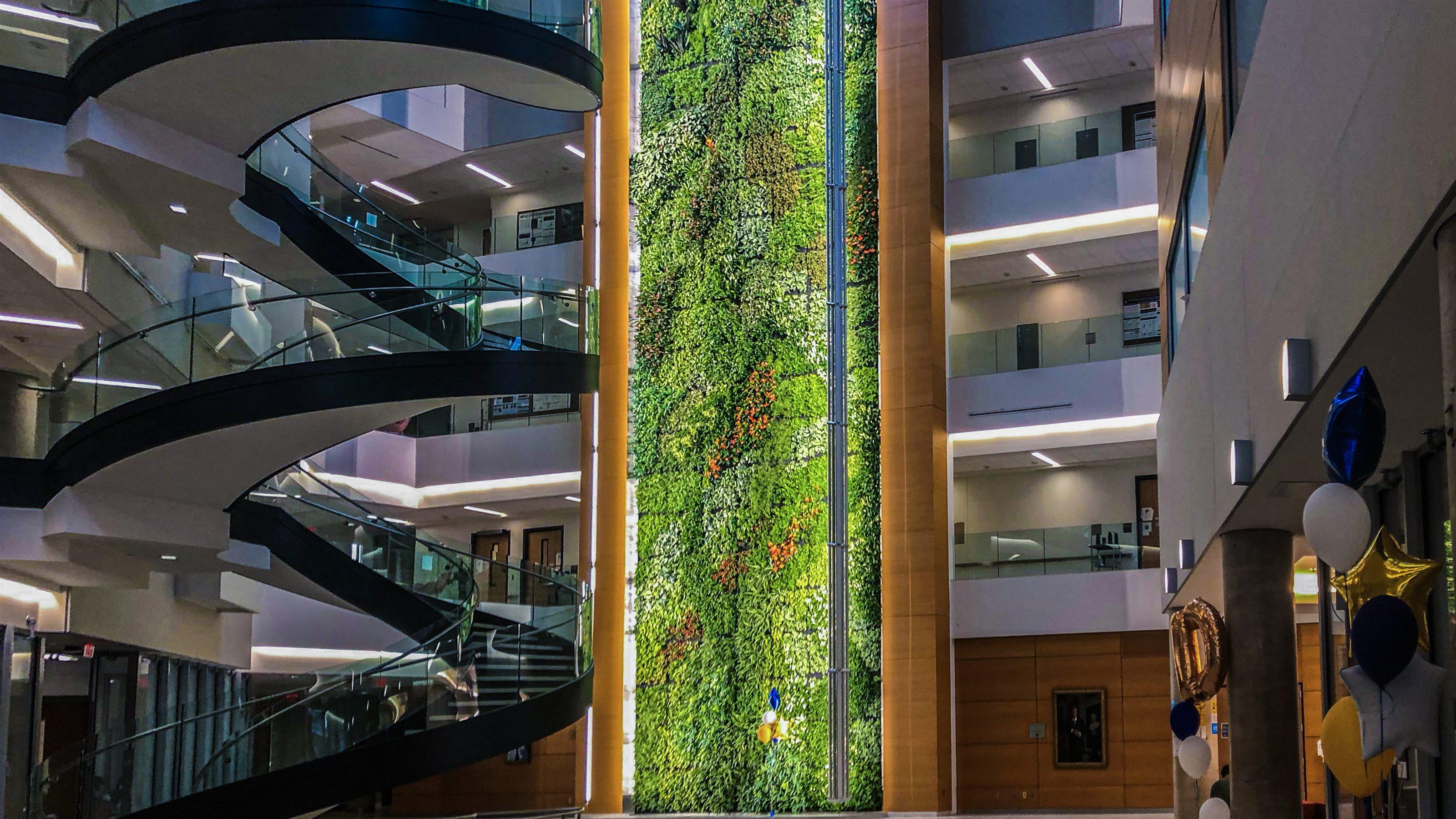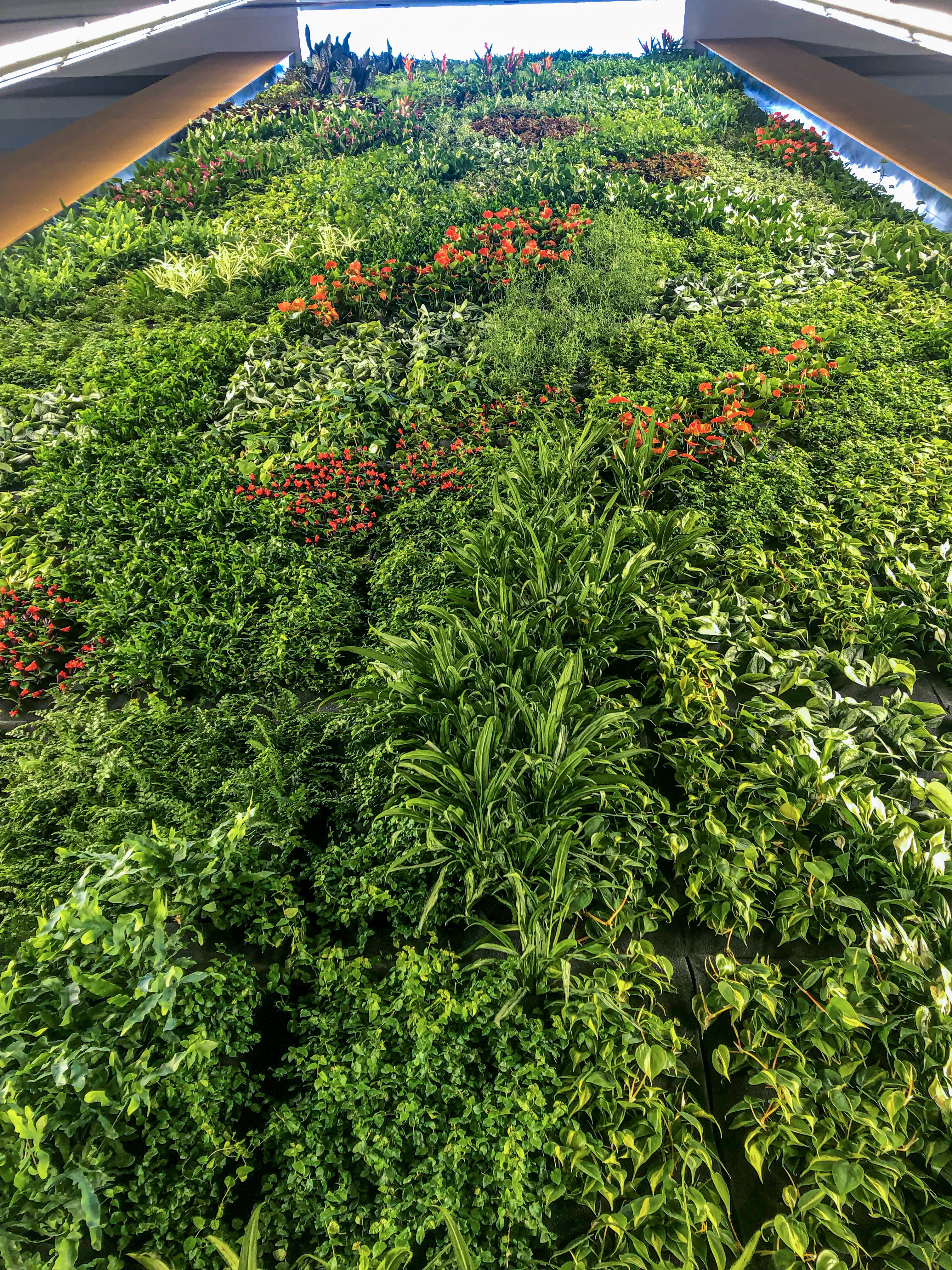Drexel Biowall is Back and Greener Than Ever

After a recently completed seven-month renovation project, Drexel University’s Biowall was reinstalled last month with a more diverse array and display of air-purifying plants and improved lighting and watering systems.
The five-story living wall located in the Papadakis Integrated Sciences Building was reconfigured to feature 161 hydroponic panels, with 42 plants per panel, that can be watered with a micro drip irrigation system using less water than before. Organized both by watering needs and visual cues, these panels are now arranged in an interwoven and colorful pattern to showcase the beauty of the 6,762 plants from 26 different species and cultivars on display. These low-light tropical plants with minimal watering requirements include Chinese evergreens, lipstick plants, flamingo flowers, and various types of philodendrons and ferns.
When it was installed ten years ago, the Biowall was the largest living biofilter in North America and the only one found at a U.S. university. Recent additions and improvements have prepared the installation for prolonged use, with optimized sustainability keeping the plants healthy and the Biowall’s structure intact.
Before the renovation project, over 12 species were included in the twenty-feet-high, 80-feet-wide installation, but the lighting system caused the plants to die off quicker than planned, and the initial watering system created damage to the wood panels of the structure. Now, a specialized lighting system designed and manufactured by the Norway-based Intravision Group was installed to create a better light wash over the Biowall. The damaged wooden panels behind and to the sides of the wall were replaced, and new stainless-steel trim and flashing were added along the perimeter to prevent water filtration.

The new plant materials have been organized by water absorption needs that can be met with a new customized and 100% water-efficient irrigation system (designed by EcoWalls, which designed the new living wall system),causing less problematic water overflow. Each panel receives approximately half a gallon of water one or two times a day during short, programmed intervals, so anywhere from 80.5 to 161 gallons of water can pass through the living wall every day. Half of the water used in programmed irrigation intervals is absorbed by the plants, and the other half is captured after use, treated and then returned to the watering tank for reuse.
The Biowall renovation project was completed at a time during the COVID-19 pandemic when supply chain issues caused delays in the shipping and receiving of parts including microchips and sensors used in the lighting fixtures. The wooden panels and watering system were installed during the fall term. The lighting installation, plant panels and plants themselves were installed during the winter term; supply chain issues also caused the plant materials to arrive significantly later than planned.
Additionally, the timing of the project also coincided with the end of Climate Year, a 2021 initiative from Drexel and the Academy of Natural Sciences to promote and improve University-wide sustainability initiatives and efforts.
In This Article
Drexel News is produced by
University Marketing and Communications.


